Having the right fit is essential when it comes to wearing a backpack and adjusting the torso length is key in making sure you have the perfect fit. This comprehensive guide will provide you with all the information and tips necessary to successfully adjust your backpack’s torso length for optimal comfort and convenience. With our step-by-step instructions, you’ll be able to ensure that your backpack fits securely on your back in no time!
How to Adjust the Backpack Torso Length?
Adjusting the backpack torso length is essential to ensure your backpack fits you correctly and provides maximum comfort. It takes just a few minutes to get it right, so be sure to follow these steps carefully:
- Start by measuring your back from the C7 vertebrae, near the base of your neck, down to your hipbone (iliac crest). This measurement is known as your torso length; make a note of this number.
- Then measure the internal length of the pack’s back panel. This may be different for each specific model, so check your user guide or contact customer service if you are unsure of the exact measurements for your pack.
- Compare these two measurements. If the internal length of the pack’s back panel is greater than your torso length, then you know that the pack is too big for you and needs to be adjusted.
- To adjust the torso length, locate the shoulder harness straps on both sides of the backpack and loosen them up by pulling them away from each other.
- Find the adjustment buckle located near your shoulders – this will allow you to shorten or lengthen the shoulder straps to match your torso measurement perfectly. Ensure that these adjustments are done evenly on both sides of your pack so it fits correctly.
- Once done, tighten up any loose straps and fasten all buckles securely; make sure your pack isn’t too tight but not too loose either.
- Lastly, put the pack on and check for any discomfort or pressure points. If everything feels good then you’ve successfully adjusted your backpack torso length! Wear it around for a while to ensure that the adjustments are comfortable and secure.
Now that you know how to adjust the backpack torso length correctly, you can be sure of getting a perfect fit every time!
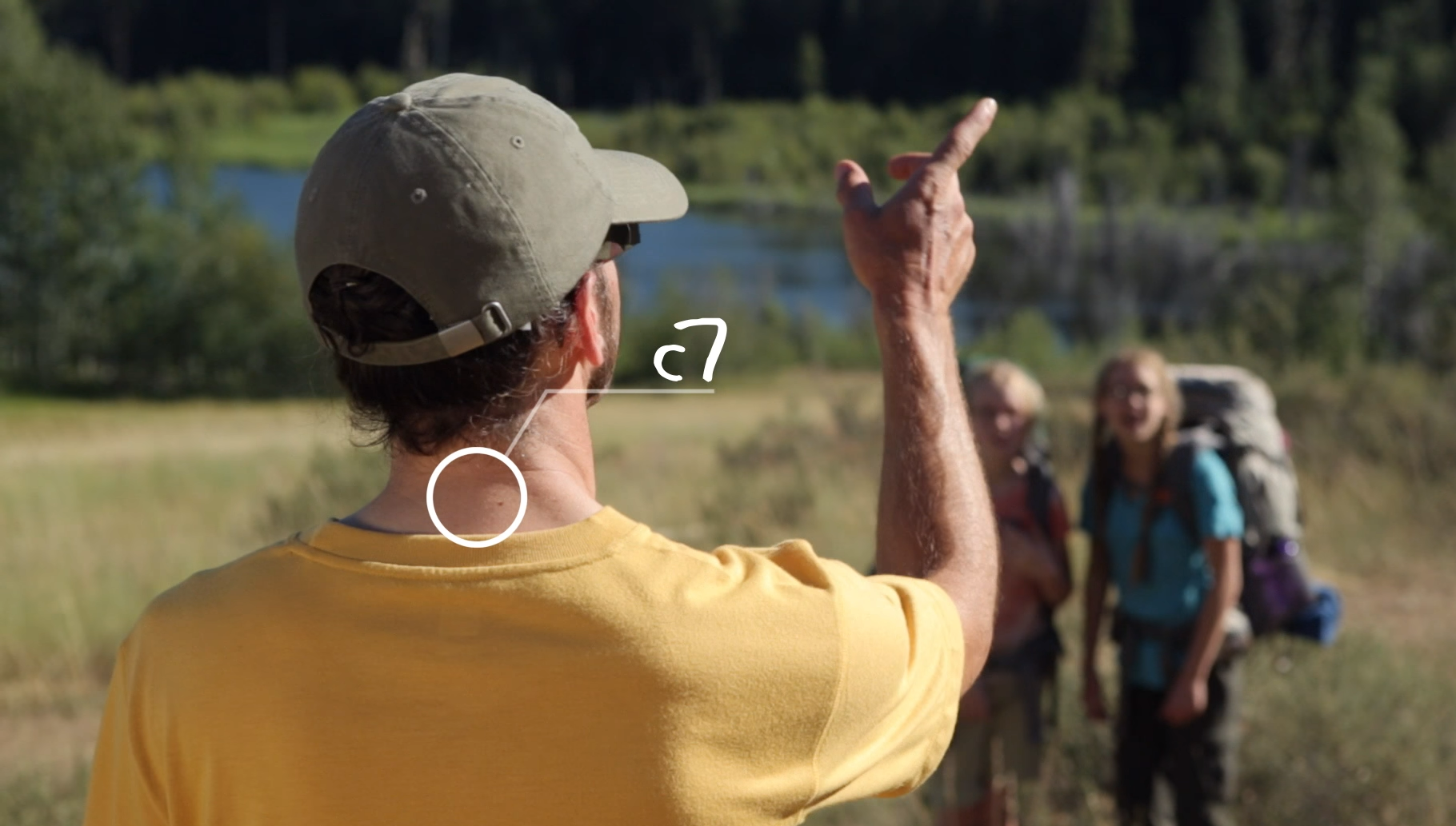
Measure your Torso Length
The first step in adjusting the torso length of your backpack is to measure yourself. To do this, use a soft cloth measuring tape and place it at the base of your neck. Run the tape down along your spine until it reaches the top of your hipbones or iliac crest – this should be around 4 inches above where your belt sits. The length between these two points is known as your torso length. If you don’t have a measuring tape handy, you can also estimate by standing with your back against a wall and noting how far down from the base of your neck to the wall that makes up roughly 4 inches.
If your torso length measures longer than the pack’s maximum length, then you need to look for a size larger or different brand where the max length fits your measurements. Likewise, if your torso length is shorter than the lowest range of the pack’s size options, then you should consider looking for a smaller option with an appropriate range that works for you.
Adjust your Torso Length
Adjusting the torso length of your backpack is one of the most important steps to ensure a comfortable and secure fit. To adjust your torso length, you’ll need to loosen two side straps located near the top of the shoulder straps. These straps can be found on either side and should be adjusted in unison so that they’re even. Once you have these straps loosened, slide them up or down until you find an ideal fit that allows for maximum comfort without compromising security.
Once adjusted, make sure both straps are firmly secured as this will help keep your bag in place when carrying heavy loads over long distances. If done correctly, adjusting your backpack’s torso length will maximize your comfort while also ensuring that your belongings remain safe and secure during your journey.
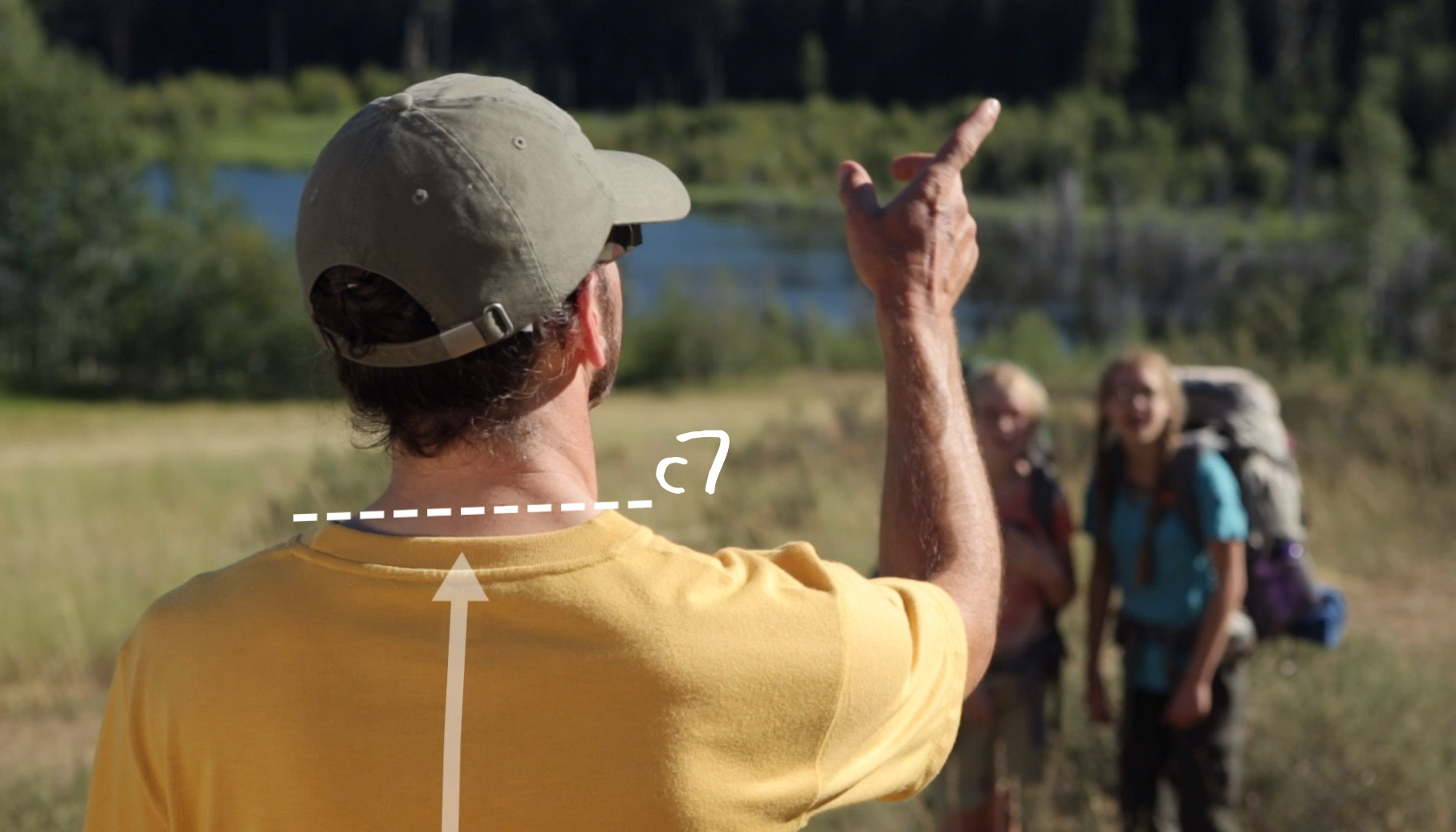
Measure your Hip Belt
The first step to adjusting the backpack torso length is to measure your hip belt. You can do this using a tape measure or a flexible measuring tape. Make sure you start measuring from the middle of your waist and then wrap it around your hips, making sure that the number on the end of the tape matches up with where you started. Once you have done this, write down the measurement so that you know what size setting you need to adjust your backpack for.
Adjusting Torso Length
The torso length of your backpack is a key factor in finding the perfect fit. Having an incorrectly sized backpack can lead to discomfort and can be dangerous if it’s too big or too small for your body. With just a few simple steps, you can easily adjust the length of your backpack to ensure that it fits you perfectly.
First, check the manufacturer’s instructions on how to adjust the torso length. If needed, refer back to these instructions during each step. Typically, adjusting the strap system is how most bags are adjusted for custom fitting. This may require loosening or tightening certain straps depending on what type of bag you have.
Next, measure from your shoulders up to the top of your hipbones. This is the exact length that should be used for your backpack’s torso adjustment. To adjust to this length, you can loosen or tighten the shoulder straps or sternum strap as necessary. Do so slowly and make sure that the bag is physically pulled up to fit snugly against your back with each adjustment you make. [1]
Finally, if you are still having trouble adjusting the torso length of your bag, consider checking with a professional pack fitting technician at an outdoor store. They can help ensure that you have a properly fitted backpack and provide advice on any additional alterations needed for optimal comfort and support on longer trails and hikes. With their assistance, you can guarantee that your backpack fits safely and comfortably before heading out into the wilderness!
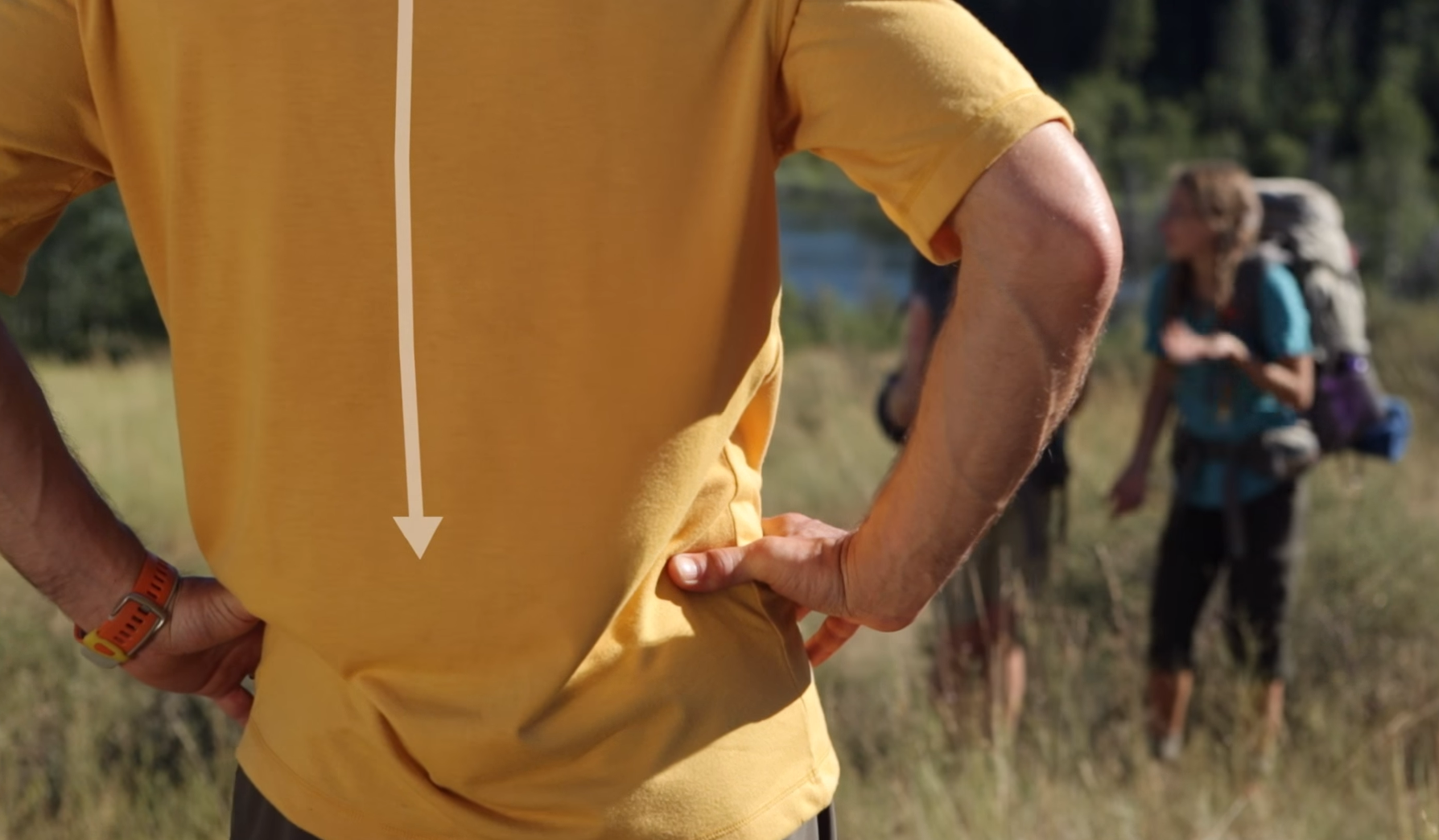
Fit Adjustment at Home
Now that you know how to measure your torso length, it’s time to adjust the fit of your backpack.
First, make sure to empty out your bag before adjusting it. This will help make sure that everything is in the right spot and that nothing gets damaged during adjustment.
Next, read through the instructions provided by the manufacturer on how to adjust the straps and buckles on your backpack. Different backpacks may require different steps for fitting them properly; if possible, refer to a YouTube tutorial or an FAQ page online about adjusting specific types of packs before getting started.
Step 1: Hipbelt
The first step in adjusting your backpack is to make sure the hipbelt fits properly. It should be snug around your waist (but not too tight!) and lay flat against your body’s curves without any gaps or bulges. Begin the adjustment process by loosening all of the straps and buckles to allow the belt to move without resistance. Then, adjust each side equally until you feel comfortable and secure when wearing the pack.
Step 2: Shoulder Straps
The second step in adjusting your backpack is to make sure the shoulder straps fit comfortably against your shoulders. To do this, you will loosen the straps and slide them up until they fit snugly against your body. Make sure the shoulder straps are not too tight or too loose. You want them to be snug so that the backpack does not move around while you are wearing it, but not so tight that they dig into your shoulders. Once you have achieved a comfortable fit for the shoulder straps, tighten them to secure your pack in place.
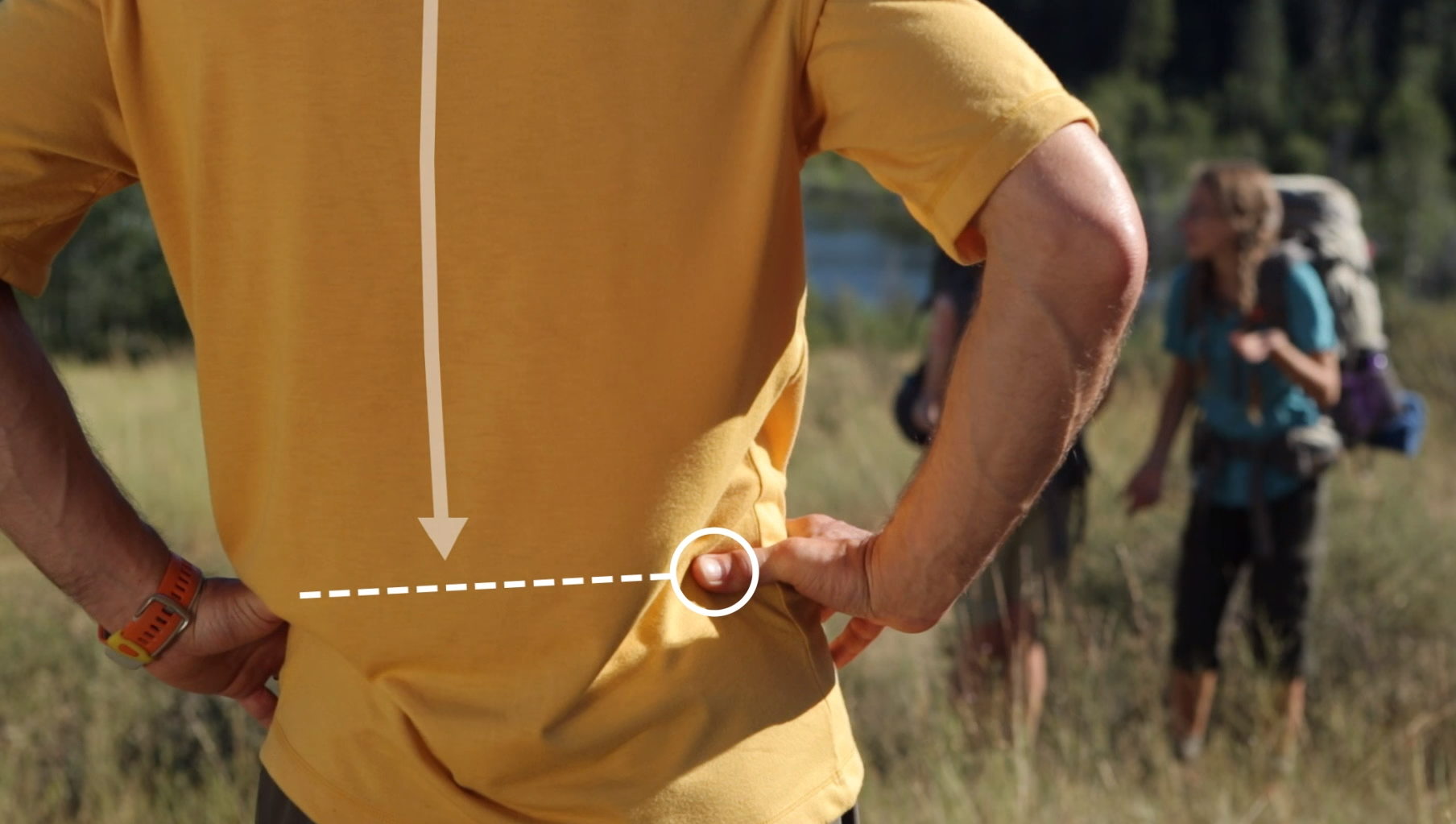
Step 3: Load Lifters
The third step in adjusting your backpack is to make sure the load lifters fit properly. This adjustment is essential as it shifts the weight of the bag from your shoulders to your hips and helps with overall comfort and stability.
The load lifters should be adjusted so that they are at a 45-degree angle, located just above the shoulder blades. The straps should also be pulled slightly tight, but not overly so, to ensure a good fit and maximum support. You can adjust both straps equally or separately until it feels comfortable on your back.
Step 4: Sternum Strap
The fourth step in adjusting your backpack is to make sure the sternum strap fits properly. This strap is located on the shoulder straps and should fit snugly across your chest, somewhere between your collarbone and below your armpits. The sternum strap should be adjustable so you can make sure it’s not too tight or too loose.
Now that you have adjusted all of the straps and buckles correctly, put all of your gear into the pack and try it on. Make sure everything feels comfortable and secure before taking your backpack out on a hike or trip!
Fit Adjustment on the Trail
Sometimes, you may need to make minor adjustments to your backpack while on the trail. This is easy to do and an important step in ensuring your bag remains comfortable throughout your hike.
To start, you should loosen the straps by releasing any buckles that secure them so they’re not too tight against the body. Then take a look at how evenly distributed the weight of the bag is across your back. If it’s off-balance, simply adjust one side until it’s level again. Make sure to double check that all loose straps are secured tightly when finished!
Finally, you want to make sure that your hip belt is firmly secured around your hips and waist in a comfortable position – again, not too tight! It should be at the same level as where your ribcage ends, so adjust accordingly until it’s secure but doesn’t cause any discomfort. [2]
Remember to take regular breaks while hiking to check that all adjustments are holding up correctly and that no extra pressure points have developed since the last time you checked. With a few minor tweaks here and there, you can ensure that your backpack remains comfortable throughout the entire hike!
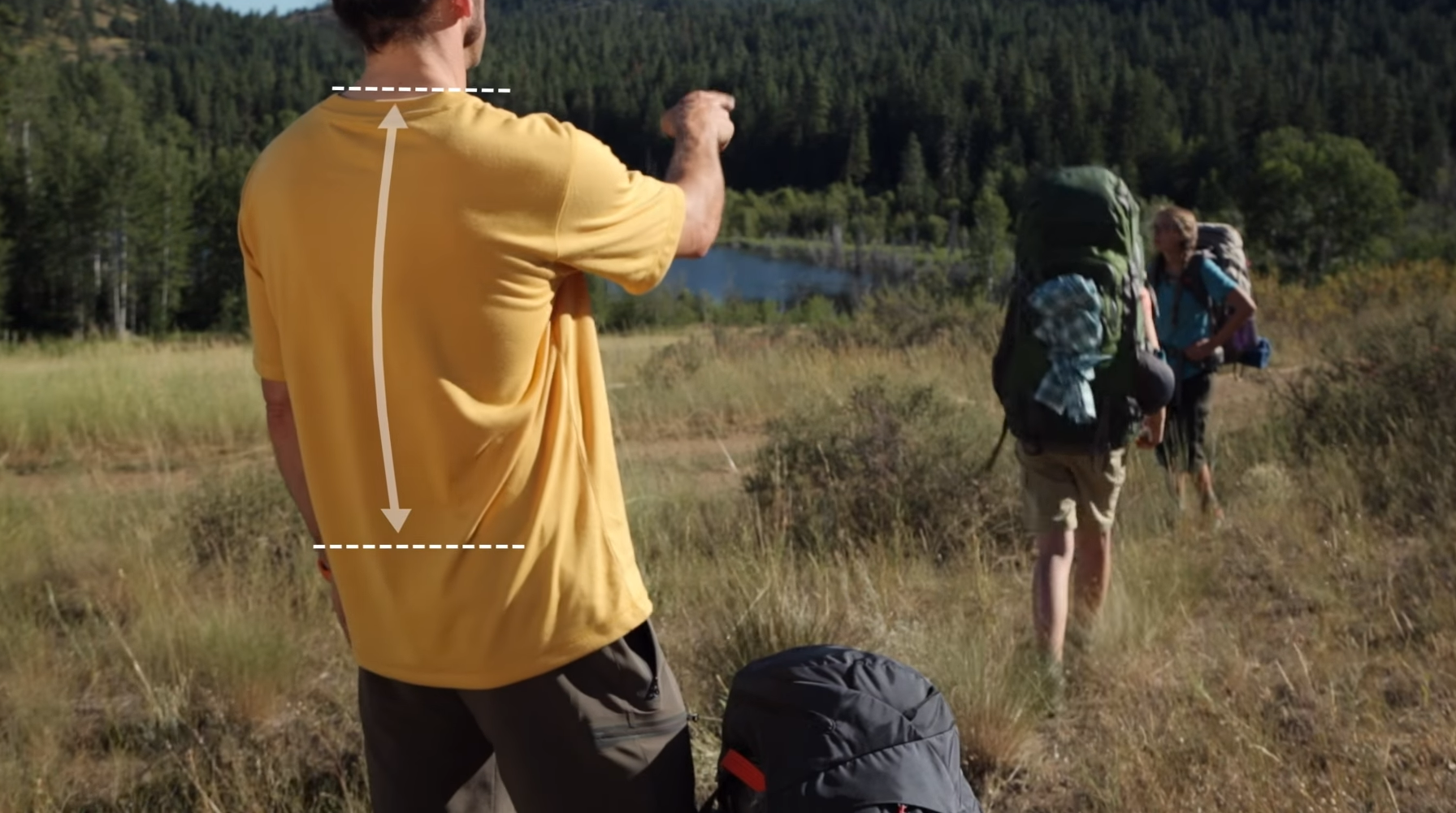
How to Choose a Backpacking Pack?
Once you’ve established your torso length and have a range of packs that fit with it, the next step is to find a backpack that offers ideal comfort and convenience. Here are some tips on what to look out for:
- Suspension System: The suspension system is the key part of your pack since it helps keep your body comfortable while carrying heavy loads. Look for a suspension system that includes adjustable shoulder straps, hip belts, load lifters, and stabilizer straps so you can customize it to fit comfortably.
- Weight Capacity: Different backpacking packs come with different weight capacities. Make sure the pack you choose meets all your requirements — including weight limits when fully loaded. Generally speaking, single day hikes require around 35-50 liters of capacity. For longer trips, you will need a pack with 50-75 liters of capacity and for extended backpacking trips, you may even need larger capacities up to 90 or 100 liters.
- Accessibility: How accessible do you want your cargo to be? Most packs come with top loading access which means all the gear is loaded from one large opening at the top of the backpack. However, if you prefer easy access to smaller items like snacks and water bottles, side pockets can help. You should also look for packs that offer an external frame as it helps provide more organization options for your gear.
Once you’ve found a backpack that fits comfortably and offers enough space to fit all your gear, you’re ready to make the purchase! The best way to ensure a perfect fit is to try on several different packs in the store before you buy. This will give you a chance to adjust the straps and check for proper alignment. And once your pack arrives, make sure to use it and get used to its weight so that you can feel comfortable with it when out on the trail.
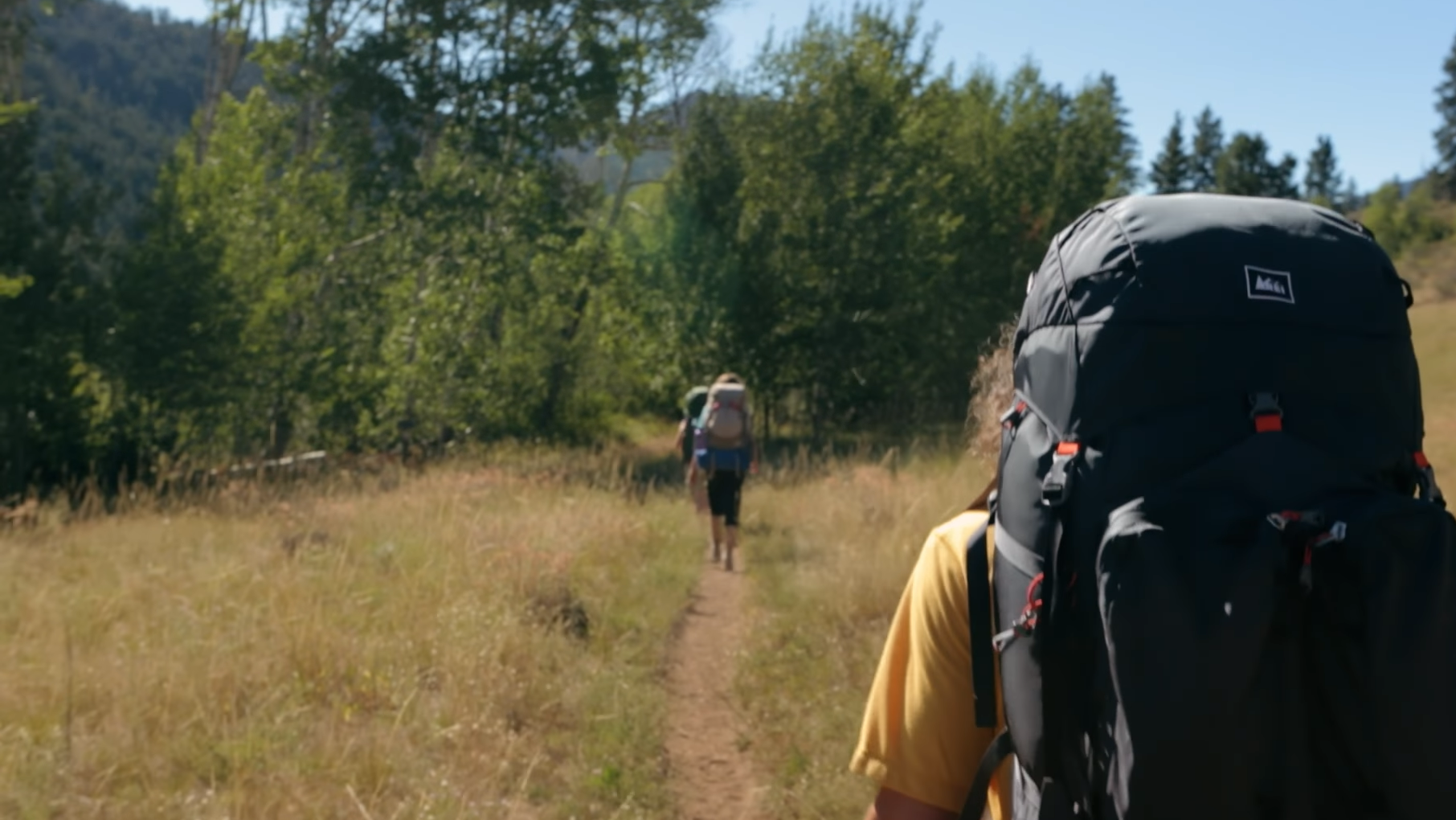
Following these tips should help you find the perfect backpack to fit your needs — ensuring comfort while out on adventures! Now that you know how to adjust torso length and choose a backpacking pack, all that’s left is hitting up the trails. So what are you waiting for? Let’s go explore!
FAQ
How do I adjust the height of my backpack?
The height of your backpack can be adjusted depending on the type of backpack you are using. If it is an adjustable pack, it will usually have straps located at both shoulders and a small strap running the length of your back. You will need to loosen all the straps to adjust the torso length. Depending on your size, you may need to adjust each shoulder strap differently in order to get the right fit for your body. Once all the straps are adjusted correctly, tighten them securely so that they hold firmly against your body.
How do you adjust the internal frame on a backpack?
Adjusting the internal frame of a backpack is easy with the right tools. To begin, you’ll need to find the two adjustable straps located inside the back panel of your backpack. These straps are typically labeled “torso length” or similar and will have sizes printed on each one that corresponds to different torso lengths.
You’ll want to determine the correct size for you before beginning this process. To do so, stand in front of a mirror with your head held straight and measure from the bone at the base of your neck (C7 vertebrae) down to your hipbone. This measurement is what will determine which torso length setting is best for you.
Once you’ve determined your proper fit, it’s time to make the adjustment. Both straps should be adjusted evenly on each side so that your bag fits snugly against your back. It’s important to note that you want to adjust the straps in such a way that the hipbelt of your backpack is at or just below the top of your hips and that the shoulder straps are just below your shoulders. This will ensure optimal comfort and stability while carrying your pack.
After you’ve made sure both sides are even, it’s time to tighten them down. Do this by pulling the two adjustable buckles outward until they meet resistance and then clip them together securely. Your adjustments are now complete and you’re ready to start exploring with a more comfortable fit! [3]
How do you adjust the waist strap on a backpack?
Adjusting the waist strap on a backpack is an important step in getting a comfortable fit. It helps to evenly distribute the weight of your pack and provides additional stability when carrying heavy loads.
The first thing you should do is locate the waist belt adjustment clips or buckles located at the bottom of your pack’s hipbelt. Most packs have these adjustable straps, but if yours doesn’t, you can buy them separately to retrofit your existing pack.
Once you’ve located the clips or buckles, pull on one side of the strap until it’s taut and then clip it into place. Repeat this process for the other side as well, making sure both straps are taught and clipped in the same direction.
Finally, adjust the buckle on the waist strap so that it fits snugly around your hips. This should be done with both straps attached to ensure a comfortable fit. Make sure you leave some slack in the waist strap for extra breathability and comfort when moving around.
Once you’ve finished adjusting your pack’s hipbelt, you can then adjust the torso length of your backpack. To do this, look for clips or buckles located near the bottom of the shoulder straps. These clips will allow you to reduce or increase the torso length of your pack depending on your height and size.
Adjusting the torso length is an important step in achieving a comfortable fit as it determines how close or far the hipbelt will be from your body. Make sure to take into account your clothing and layers when adjusting the torso length, as this may affect how snugly the pack fits against you.
Carefully adjust the clips or buckles on either side of the straps until they fit comfortably against your back. Once finished, double check that all clips are securely fastened and there is no extra slack in any of the straps. With a few simple steps, you can ensure a comfortable fit for your backpack. [4]
How can I make my backpack smaller?
If you want to make your backpack smaller, it’s important to adjust the torso length. This will help ensure that you have a comfortable fit and that the straps don’t dig into your shoulders or waist. Here are some tips for adjusting the backpack torso length:
- Make sure you already know your body’s measurements before you start trying to adjust the pack size. Measure from your shoulders down to about four inches above your belly button with a tape measure and then use the measurement as a guide when learning how to adjust the backpack torso length.
- Start by loosening all of the straps on the back panel and shoulder straps until they can slide freely up and down on their own.
- Locate the main torso height adjustment buckles on your backpack and then adjust them so that they fit snugly around your body according to the measurement you previously took.
- Now, adjust all of the other straps on the back panel and shoulder straps until everything feels comfortable and secure. Make sure there is no slack in any of these straps as this can cause discomfort while wearing it.
- Finally, try putting on the backpack with some weight inside to make sure that it fits correctly and isn’t too tight or too loose. If needed, you can make further adjustments until you get a perfect fit! [5]
Now that you know how to adjust the backpack torso length, you’ll be able to find the perfect fit for your body so you can comfortably carry your gear around with you. Enjoy!
If you need further assistance, contact our customer service team who are always happy to help.
Useful Video: Fitting a Backpack: Finding your torso length
Conclusion
Now that you know how to adjust the backpack torso length, it’s time to go out and enjoy your adventures. Whether you need a longer or shorter pack, adjusting the straps can help customize the fit to maximize your comfort and enjoyment. Now that you understand this important feature on backpacks, it’ll be much easier for you to select a comfortable option when shopping in the future. Happy trails!
References:
- https://purehiker.com/adjust-backpack-torso-length/
- https://www.rei.com/learn/expert-advice/backpacks-adjusting-fit.html
- https://www.salomon.com/en-us/outdoor/outdoor-advice/how-properly-adjust-your-backpack
- https://www.outdooractive.com/en/knowledgepage/how-to-adjust-your-backpack/38588564/
- https://gobackpacking.com/5-simple-ways-to-pack-your-backpack-lighter/





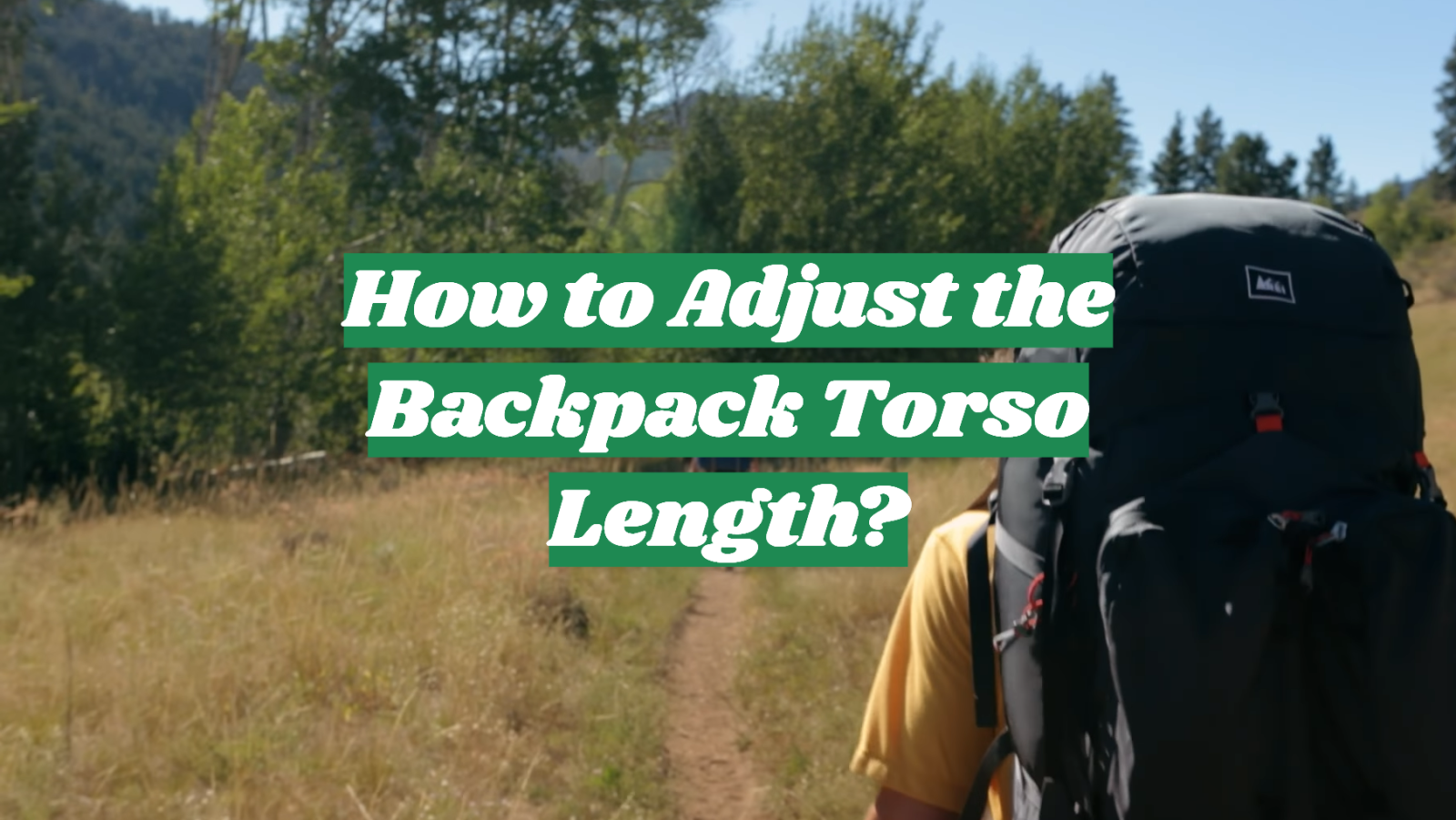



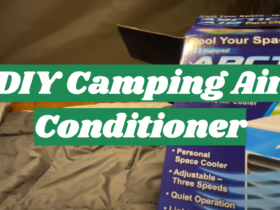
Leave a Review